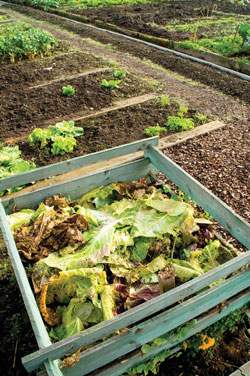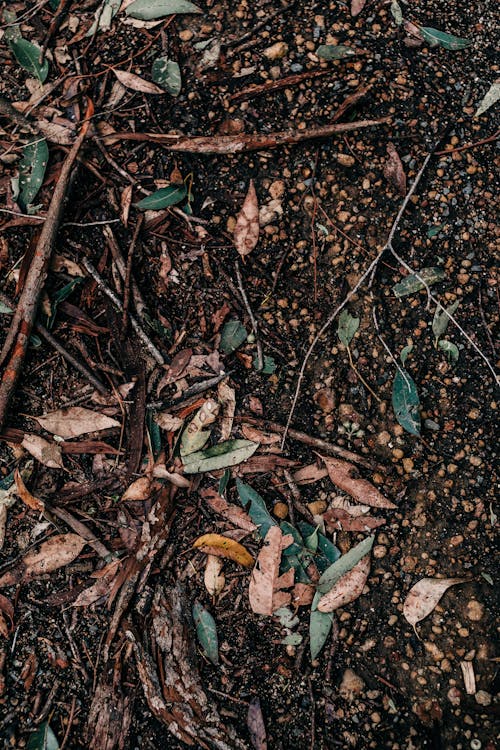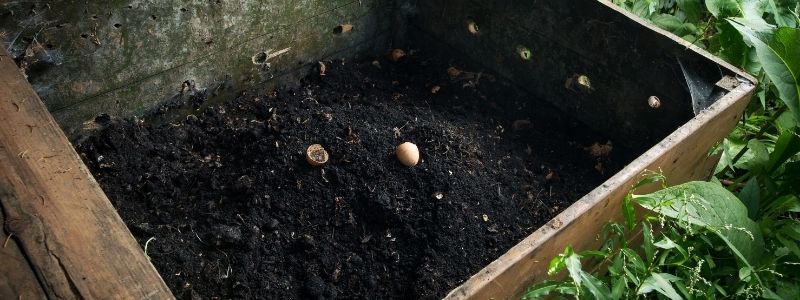Compost contains all of the nutrients that living plants need, and delivers them in a slow-release manner over several years.
What exactly is compost?
More than decayed organic matter, compost is the end product of a complex biological process involving the interaction of thousands of different species of microorganisms, including bacteria, fungi, worms, and insects. Composting in Dripping Springs uses natural processes rather than machinery or man-made chemicals to create a healthful environment for plants. And it’s a thrifty way to improve soil because you probably already have the ingredients in your home or yard.
Small amounts of wood ashes are OK, but too much may counteract the effect of an activator like manure.
What should I do with it?
Any pile of organic matter will rot eventually, but choosing the proper spot for your compost pile will accelerate the process. A level, well-drained area in the shade is ideal. Most people collect compost materials in a bin or container because it saves space, hastens decomposition and makes a neater yard. A simple structure that allows for air circulation can hold garden waste until the materials break down.
Create a compost bin
- Use wire, pallets, or boards, or purchase ready-made bins of plastic or wood.
- You’ll need a tight lid to keep out rain and keep in heat generated by the decomposing process.
- To speed things up, consider a tumbling or spinning unit that automatically turns, mixes and aerates the components of an active compost pile.
What should I put in it?
Almost any organic matter can become compost. Aim for a mixture that contains 25 parts of carbon-rich materials (think brown — dried leaves, straw, wood chips) to one part of nitrogen-rich materials (think green — grass clippings, kitchen scraps). Too much brown causes the pile to break down too slowly, while too much green can make the pile smell badly. 
- Leaves, pine needles, and grass clippings all decompose faster if shredded. Since fresh grass clippings tend to clump together, use thin layers, and mix with plenty of brown material. If you have a lot of grass clippings, let them dry out on your driveway until they become straw-like.
- Wood ashes from the fireplace (but not charcoal briquettes) can be sprinkled in small amounts between layers. Garden waste such as disease-free spent plants, weeds (before they go to seed) and deadheaded flowers can be included.
- Kitchen refuse such as vegetable peelings, tea leaves, coffee grounds, and filters, and eggshells are good compost materials.
- You can even throw in hair, dryer lint, shredded paper, cardboard and newspaper.
- If you have access to algae, seaweed or lake moss, toss them in since they add beneficial nutrients.
Items that should NOT go in the compost pile include
- Meat scraps
- Fat or grease
- Pet droppings
- Sawdust from treated wood
- Ashes from coal or charcoal
Note: Small amounts of wood ashes are OK, but too much may counteract the effect of an activator like manure.
Recipe for the perfect compost
- Start by making a 6-inch layer of chopped leaves, grass clippings, and kitchen waste.
- Cover this with 3 to 6 inches of compost activators—alfalfa meal, barnyard manure, bone meal and cottonseed meal or rich compost from a finished pile.
- Alternate layers until your compost heap is about 3 feet tall and 3 feet square, a size that will generate enough heat during decomposition to sterilize the compost.
- Add new materials as they become available, but each time you add a layer, sprinkle on some activator and water well.
Compost contains all of the nutrients that living plants need, and delivers them in a slow-release manner over several years.
Composting is like FREE DIRT
If you’re in a hurry
Turn the pile weekly with a pitchfork or aerating tool. Otherwise, this job can be done less frequently.  Some people have two bins and simply shovel it from one to the other. Mixing allows oxygen into the center to encourage the growth of bacteria and fungi—the critters that transform it into rich humus for your plants. At best, expect to wait about eight months for a ready-to-use product. Since decomposition occurs most efficiently when the temperature inside the pile is between 104 and 131 degrees F (compost thermometers are available at garden shops), avoid turning the pile when the temperature is in this range.
Some people have two bins and simply shovel it from one to the other. Mixing allows oxygen into the center to encourage the growth of bacteria and fungi—the critters that transform it into rich humus for your plants. At best, expect to wait about eight months for a ready-to-use product. Since decomposition occurs most efficiently when the temperature inside the pile is between 104 and 131 degrees F (compost thermometers are available at garden shops), avoid turning the pile when the temperature is in this range.
Got a problem? Try these solutions
- Pile isn’t heating up — Add more nitrogen-rich sources like manure, grass clippings or food scraps. Mix and add water if the pile is dry.
- Matted leaves or grass clippings aren’t decomposing — Break up layers and shred material into smaller pieces.
- Smells bad — Mix pile to aerate. If it’s wet or compacted, add coarse dry materials like straw, hay or leaves to soak up excess moisture.
- Pile has ammonia odor — Add brown materials to bring in more carbon.
- Attracts rodents or flies — Bury kitchen scraps in the center, and leave out food-based materials that attract such animals.
Compost contains all of the nutrients that living plants need, and delivers them in a slow-release manner over several years. Use it for new plantings, potting soil, or anytime you want to give your soil a boost.

